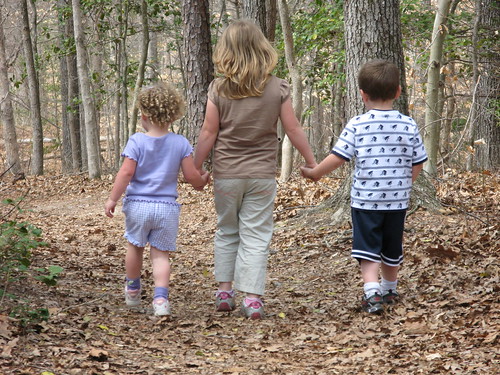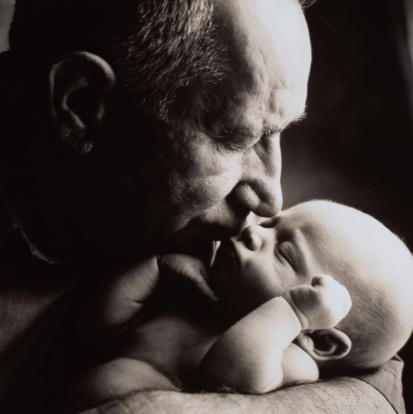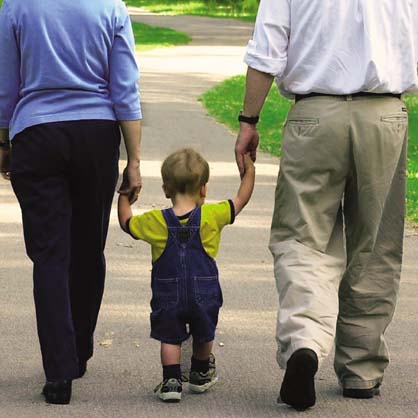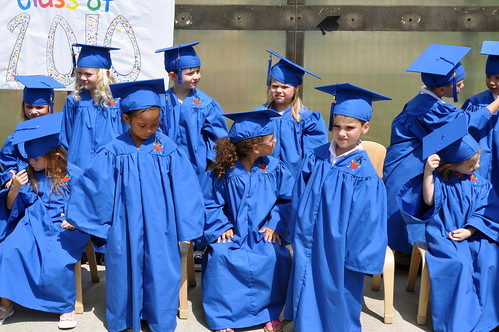
In my meetings with kids, I ask them to share perspectives on family, including hopes and wishes for how family might work best when parents are living in separate homes. I recently had the privilege to meet with four amazing young women; siblings whose parents are getting unmarried in a
Collaborative Team Process.
I continually learn from kids with whom I work as a neutral child specialist. Each of these girls made thoughtful observations for me to share with their parents, so I asked them and their parents if I could write a blog post to share these ideas with others. Because they are thoughtful, empathetic and generous people, they agreed, and have my deep gratitude and appreciation.
Below are words of wisdom from Lauren, Kelly, Emily and Grace. Though focusing on one quote per girl, I want to stress that each of them had many wonderful insights about all the areas mentioned.
Lauren on Holiday and Birthday Celebrations
“I want one graduation party, not two. This is about me, not my parents. And I want them both to come and to get along.”
Lauren’s words represent the viewpoint of many kids, and are a powerful reminder that children of all ages have strong feelings about family celebrations. Lauren also talked about preserving family traditions on both sides for holidays, like Christmas. Tuning in to kids’ perspectives can help parents figure out how to preserve important traditions while adding new ones, providing grounding and clarity for all family members.
Kelly on Co-parent Cooperation
“I want my parents to remember they’re both always my parents no matter which house I am at.”
Kelly’s words articulate the heart of the positive and profound shift in family law away from attaching custody labels toward co-parenting and creating parenting plans based on the best interests of kids. Kids dislike the feeling of going from “Mom Island” to “Dad Island,” and feel safer if parents respect and honor their relationships with both parents. Effective co-parent communication is a centerpiece of parenting and relationship plans in Collaborative Team Practice.
Emily on Transitions between Homes
“I hope my parents will have a one to two hour window for me to go from one house to the other, so it’s do-able if I am in the middle of something or with a friend.”
One of the most challenging aspects of a divorce for kids is transitioning between homes. It is vital that parents work together to make transitions as smooth, cordial and stress-free as possible. Emily’s words are an important reminder to regularly check in and listen to kids about what is working well and not so well in transitions. Parents need patience and empathy: kids have lives too!
Grace on Family Transformation
“I want us to be a together and apart family. We’re still a family, but we’re just split.”
Grace absolutely nailed why I do the work I do as a neutral child specialist. What she said is both insightful and core to helping kids develop resilience. It is so important that all family members move forward with the deep understanding that getting unmarried does not end a family with children, but transforms it.
Thank you Lauren, Kelly, Emily and Grace. We will keep listening!
 Sometimes Life’s lessons are subtle and elusive. Other times, they’re less so.
In mid-March, my granddaughter arrived “in the usual way”, big dark eyes and a head full of dark hair that had all the nurses exclaiming. My stepson was beside himself with joy and tenderness. My wife’s feelings radiated from her face like a beacon. That was Thursday night. On Monday, the new parents brought the baby to St. Johns Hospital to visit Grampa, who was failing, and in and out of awareness. Grampa was able to sit up and hold his great-granddaughter. “Sweet baby!” he murmured repeatedly, smiling down at her.
The next day, Grampa returned to his assisted living apartment under a hospice arrangement. The last weekend of March saw my wife and I camped at his bedside from Friday on. Relatives came and went, and as the significance of the moment registered, I expressed my feelings in poetry. Monday morning he slipped away. The funeral was three days later.
In each case, I was reminded of the majesty and grandeur of Life’s primal events; of how great is the illusion of human control over the most important matters of our lives. I wondered at the ability of a tiny baby to cement two young people together, and suddenly found myself thinking how insane is the notion that anything could ever separate her parents. Yet, as a divorce lawyer, I see it every day. And I was humbled once again recalling my clients who reconnected with the joy of their children’s births at the same time they were witnessing the death of their marriages; who saved what they could and grieved the loss of what they couldn’t. Occasionally, I hear from them, reporting that the Great Wheel of Life did, in fact, continue to turn; that sometimes the lessons they learned were not realized until months or even years later. It made them, they report, much more sensitive to the teachings of any given moment. It made them participants, rather than mere spectators, in their own lives. It made them think.
Sometimes Life’s lessons are subtle and elusive. Other times, they’re less so.
In mid-March, my granddaughter arrived “in the usual way”, big dark eyes and a head full of dark hair that had all the nurses exclaiming. My stepson was beside himself with joy and tenderness. My wife’s feelings radiated from her face like a beacon. That was Thursday night. On Monday, the new parents brought the baby to St. Johns Hospital to visit Grampa, who was failing, and in and out of awareness. Grampa was able to sit up and hold his great-granddaughter. “Sweet baby!” he murmured repeatedly, smiling down at her.
The next day, Grampa returned to his assisted living apartment under a hospice arrangement. The last weekend of March saw my wife and I camped at his bedside from Friday on. Relatives came and went, and as the significance of the moment registered, I expressed my feelings in poetry. Monday morning he slipped away. The funeral was three days later.
In each case, I was reminded of the majesty and grandeur of Life’s primal events; of how great is the illusion of human control over the most important matters of our lives. I wondered at the ability of a tiny baby to cement two young people together, and suddenly found myself thinking how insane is the notion that anything could ever separate her parents. Yet, as a divorce lawyer, I see it every day. And I was humbled once again recalling my clients who reconnected with the joy of their children’s births at the same time they were witnessing the death of their marriages; who saved what they could and grieved the loss of what they couldn’t. Occasionally, I hear from them, reporting that the Great Wheel of Life did, in fact, continue to turn; that sometimes the lessons they learned were not realized until months or even years later. It made them, they report, much more sensitive to the teachings of any given moment. It made them participants, rather than mere spectators, in their own lives. It made them think.  Sometimes Life’s lessons are subtle and elusive. Other times, they’re less so.
In mid-March, my granddaughter arrived “in the usual way”, big dark eyes and a head full of dark hair that had all the nurses exclaiming. My stepson was beside himself with joy and tenderness. My wife’s feelings radiated from her face like a beacon. That was Thursday night. On Monday, the new parents brought the baby to St. Johns Hospital to visit Grampa, who was failing, and in and out of awareness. Grampa was able to sit up and hold his great-granddaughter. “Sweet baby!” he murmured repeatedly, smiling down at her.
The next day, Grampa returned to his assisted living apartment under a hospice arrangement. The last weekend of March saw my wife and I camped at his bedside from Friday on. Relatives came and went, and as the significance of the moment registered, I expressed my feelings in poetry. Monday morning he slipped away. The funeral was three days later.
In each case, I was reminded of the majesty and grandeur of Life’s primal events; of how great is the illusion of human control over the most important matters of our lives. I wondered at the ability of a tiny baby to cement two young people together, and suddenly found myself thinking how insane is the notion that anything could ever separate her parents. Yet, as a divorce lawyer, I see it every day. And I was humbled once again recalling my clients who reconnected with the joy of their children’s births at the same time they were witnessing the death of their marriages; who saved what they could and grieved the loss of what they couldn’t. Occasionally, I hear from them, reporting that the Great Wheel of Life did, in fact, continue to turn; that sometimes the lessons they learned were not realized until months or even years later. It made them, they report, much more sensitive to the teachings of any given moment. It made them participants, rather than mere spectators, in their own lives. It made them think.
Sometimes Life’s lessons are subtle and elusive. Other times, they’re less so.
In mid-March, my granddaughter arrived “in the usual way”, big dark eyes and a head full of dark hair that had all the nurses exclaiming. My stepson was beside himself with joy and tenderness. My wife’s feelings radiated from her face like a beacon. That was Thursday night. On Monday, the new parents brought the baby to St. Johns Hospital to visit Grampa, who was failing, and in and out of awareness. Grampa was able to sit up and hold his great-granddaughter. “Sweet baby!” he murmured repeatedly, smiling down at her.
The next day, Grampa returned to his assisted living apartment under a hospice arrangement. The last weekend of March saw my wife and I camped at his bedside from Friday on. Relatives came and went, and as the significance of the moment registered, I expressed my feelings in poetry. Monday morning he slipped away. The funeral was three days later.
In each case, I was reminded of the majesty and grandeur of Life’s primal events; of how great is the illusion of human control over the most important matters of our lives. I wondered at the ability of a tiny baby to cement two young people together, and suddenly found myself thinking how insane is the notion that anything could ever separate her parents. Yet, as a divorce lawyer, I see it every day. And I was humbled once again recalling my clients who reconnected with the joy of their children’s births at the same time they were witnessing the death of their marriages; who saved what they could and grieved the loss of what they couldn’t. Occasionally, I hear from them, reporting that the Great Wheel of Life did, in fact, continue to turn; that sometimes the lessons they learned were not realized until months or even years later. It made them, they report, much more sensitive to the teachings of any given moment. It made them participants, rather than mere spectators, in their own lives. It made them think. 




